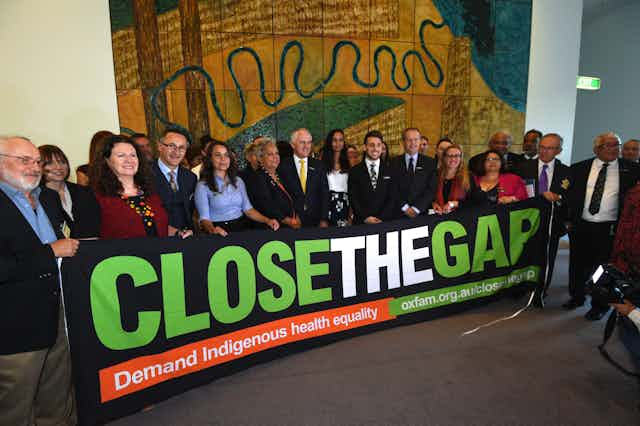As 2018 approaches, the government has failed to meet its deadline for halving the gap in employment between Indigenous and non-Indigenous Australians. This gap is still wide, and is growing, particularly in remote areas.
The Council of Australian Governments agreed to this goal in 2008 as part of the Closing the Gap framework on Indigenous disadvantage.
Read more: Radical rethink of Closing the Gap required, despite some progress
Recent Census data shows the extent of Indigenous unemployment across Australia and in Queensland’s remote communities. The unemployment gap appears to have reduced from 20.2% to 11.6% across Australia and from 53.6% to 30.7% in Queensland’s remote communities.
However in 2016 across Queensland’s remote communities, Indigenous Australians were still nearly 13 times more likely to be unemployed (at a rate of 33.3%) than non-Indigenous Australians (2.6%). The gap in labour-force participation, while remaining somewhat steady across Australia, is growing in Queensland’s remote communities (from 29.0% in 2006 to 35.4% in 2016).
The gap in median weekly personal income is also widening between Indigenous and non-Indigenous Australians both nationally and across Queensland’s remote communities.
When we look at median personal income, even where Indigenous Australians are more likely to be working, non-Indigenous Australians are still being paid more. Different skill sets, the continued gap in educational attainment, job choice, workplace discrimination and underemployment may play a role here.
Since employment is meant to be, at least partially, a means of ending cycles of disadvantage, we ought to ask ourselves about what this means for our government’s choice of target. Is simple “employment” the only helpful measure?
How to address the gap
Recently, the federal government announced it would work with Indigenous Australians to review and refresh the Closing the Gap framework.
In remote areas, there are a complex variety of issues that lead to bigger employment gaps. One example is a legacy of poorer school attendance and outcomes.
For example, a recent report by the Australian Council for Educational Research and the most recent Closing the Gap report confirm that attendance can be up to 20% less in remote areas. So tackling school attendance and outcomes will likely lead to improved employment over time.
There are typically also poorer outcomes for Indigenous Australians across other key social indicators (for example health and safety) that affect their ability to work. A successful approach will ensure these issues can also be addressed.
Remote economies also tend to be weaker, so there are often fewer jobs available (though non-Indigenous unemployment is still very low in these locations).
The impacts of past remote-employment programs should also be carefully considered. Over 30 or so years, the Community Development Employment Programme (introduced in 1977) created artificial economies that stifled genuine economic development by providing free or heavily-subsidised work for the dole labour.
Subsequent programs, such as the Remote Jobs and Communities Programme and particularly the current Community Development Programme do the same to varying extents. The government hasn’t yet struck the right balance between up-skilling remote job seekers, stimulating remote economies, and transitioning job seekers into real employment.
It’s now in the process of creating yet another remote employment program to replace the Community Development Programme (the sixth program in ten years). Whether or not they are able to better strike this balance in future programs is yet to be seen.
Read more: Census data shows just how bad we've been at closing inequality gaps
Finally, it has been said time and time again, but the message still does not seem to be getting through - to close the gap, Indigenous Australians need to lead the process, as the experts. They understand Indigenous history, context and circumstances in ways that non-Indigenous public servants and politicians, sitting at their faraway desks, simply can’t.
This includes Indigenous organisations, which are more likely to employ Indigenous people and achieve outcomes than non-Indigenous service providers because they have real “skin in the game”.
However, in Queensland, only about 13% of the Community Development Programme providers listed by the Department of Prime Minister and Cabinet are Indigenous. There is clearly some way to go here.
The government’s commitment to working with Indigenous Australians to refresh the Closing the Gap framework is positive. However, only time will tell whether we end up with the same old agenda or a more useful approach that enables meaningful progress to be made.

